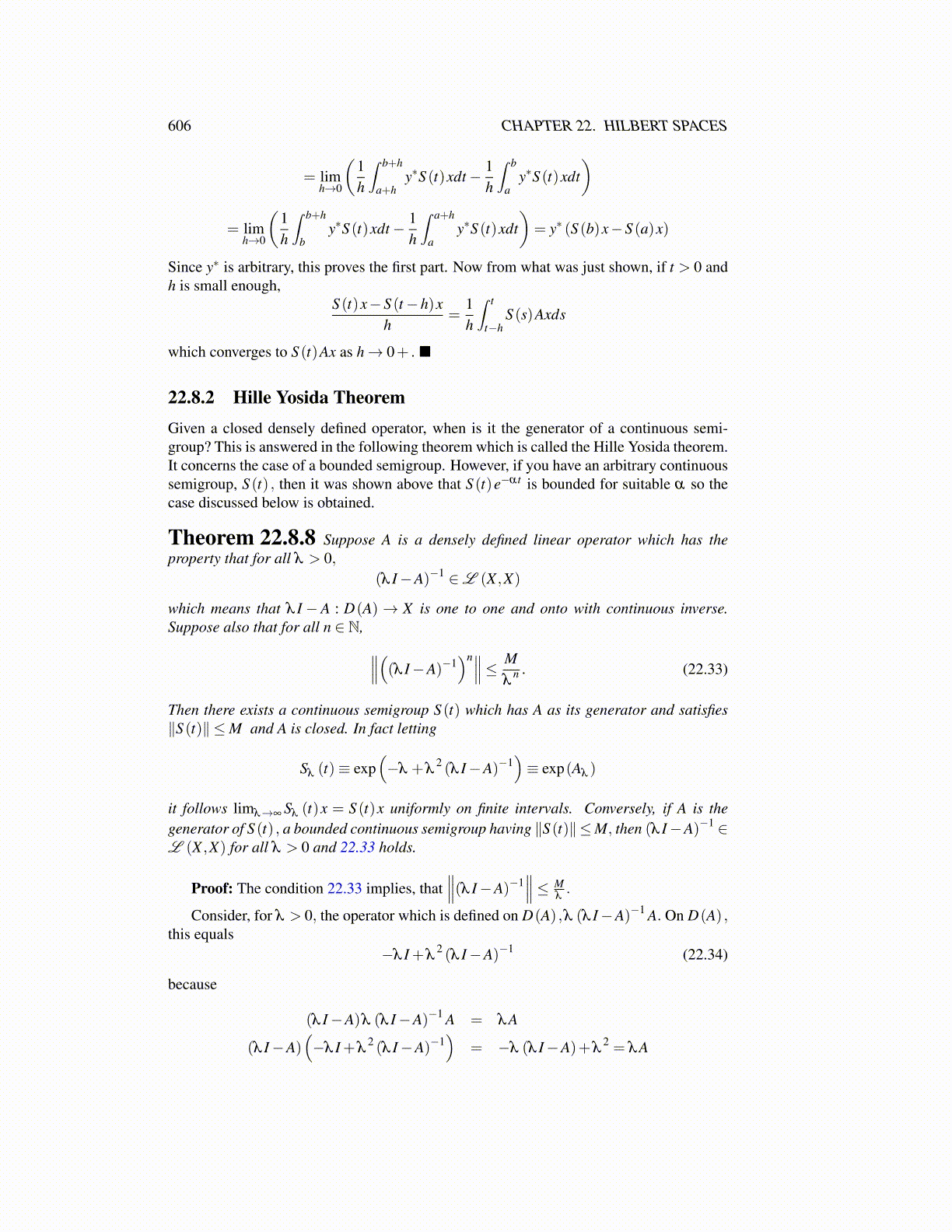
606 CHAPTER 22. HILBERT SPACES
= limh→0
(1h
∫ b+h
a+hy∗S (t)xdt− 1
h
∫ b
ay∗S (t)xdt
)
= limh→0
(1h
∫ b+h
by∗S (t)xdt− 1
h
∫ a+h
ay∗S (t)xdt
)= y∗ (S (b)x−S (a)x)
Since y∗ is arbitrary, this proves the first part. Now from what was just shown, if t > 0 andh is small enough,
S (t)x−S (t−h)xh
=1h
∫ t
t−hS (s)Axds
which converges to S (t)Ax as h→ 0+ . ■
22.8.2 Hille Yosida TheoremGiven a closed densely defined operator, when is it the generator of a continuous semi-group? This is answered in the following theorem which is called the Hille Yosida theorem.It concerns the case of a bounded semigroup. However, if you have an arbitrary continuoussemigroup, S (t) , then it was shown above that S (t)e−αt is bounded for suitable α so thecase discussed below is obtained.
Theorem 22.8.8 Suppose A is a densely defined linear operator which has theproperty that for all λ > 0,
(λ I−A)−1 ∈L (X ,X)
which means that λ I − A : D(A)→ X is one to one and onto with continuous inverse.Suppose also that for all n ∈ N, ∥∥∥((λ I−A)−1
)n∥∥∥≤ Mλ
n . (22.33)
Then there exists a continuous semigroup S (t) which has A as its generator and satisfies∥S (t)∥ ≤M and A is closed. In fact letting
Sλ (t)≡ exp(−λ +λ
2 (λ I−A)−1)≡ exp(Aλ )
it follows limλ→∞ Sλ (t)x = S (t)x uniformly on finite intervals. Conversely, if A is thegenerator of S (t) , a bounded continuous semigroup having ∥S (t)∥≤M, then (λ I−A)−1 ∈L (X ,X) for all λ > 0 and 22.33 holds.
Proof: The condition 22.33 implies, that∥∥∥(λ I−A)−1
∥∥∥≤ Mλ.
Consider, for λ > 0, the operator which is defined on D(A) ,λ (λ I−A)−1 A. On D(A) ,this equals
−λ I +λ2 (λ I−A)−1 (22.34)
because
(λ I−A)λ (λ I−A)−1 A = λA
(λ I−A)(−λ I +λ
2 (λ I−A)−1)
= −λ (λ I−A)+λ2 = λA